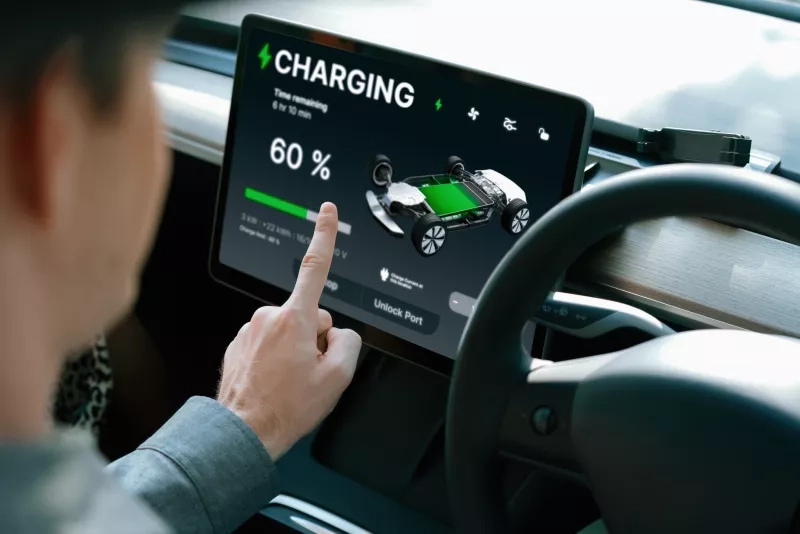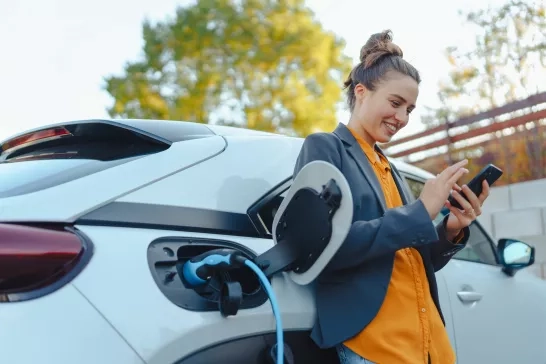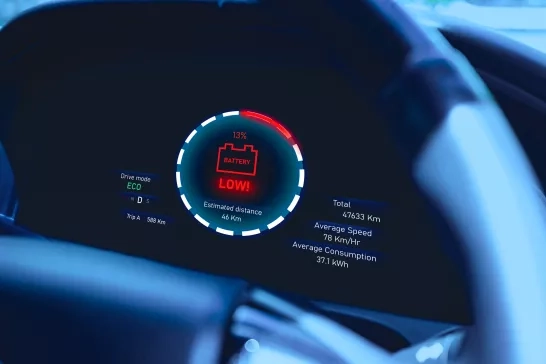CAA conducts first large-scale winter EV test drive to evaluate cold-weather performance
4 Minute Read
As Canadians increasingly look towards electric vehicles (EVs) as a sustainable alternative to gas-powered cars, there are still many unknowns when it comes to their performance in the country's harsh winter conditions.
For many drivers, concerns about range, charge times and the availability of public charging stations in freezing temperatures remain significant barriers to full EV adoption. A recent national CAA survey of EV owners found that more than 65 percent have experienced lower battery range in cold weather.
To address these questions, CAA clubs from across Canada recently conducted the first-ever CAA EV Winter Test Drive, Canada’s biggest independent test drive of EVs in winter.
"If we are to rely on EVs going forward and understand what lifestyle changes we need to make to drive them, we also need to understand what the range actually is in the winter and how fast they're going to charge, said Julie Beun, managing director of communications and public relations at CAA North & East Ontario.
The CAA EV Winter Test Drive, which mirrored similar studies conducted by CAA's sister club in Norway, aims to shed light on how EVs behave when temperatures plummet and how EV performance stacks up against ranges posted by manufacturers.
The test began on Feb. 3, 2025, to provide accurate data on how electric vehicles perform in extreme cold.
Why does it matter?
Officially posted Canadian EV ranges are based on overall, year-round numbers that include winter and summer conditions.
Each vehicle was driven until the battery ran completely out of power to determine range in winter conditions. The results were compared to the estimated driving range published by Natural Resources Canada (NRCan). In Canada, only a single average is published, so consumers don’t have an accurate picture of winter range.
CAA’s test shows the real-world impact of cold conditions on EV batteries. Across the board, the cars used in the CAA EV Winter Test Drive drove 14 to 39 percent less than their official range.
Two vehicles well in the cold, the Chevrolet Silverado EV and the Polestar 2. Both drove just 14 percent less than their posted range, while the Volvo XC40 Recharge and Toyota bZ4X came in last and second last.
Temperatures during the drive varied between -7 and -15 degrees Celsius, representing a typical Canadian winter.
|
Vehicle (alphabetic order) |
Rank: Longest Range |
Total kilometers driven on single charge |
Official range published by NRCan |
Difference Between Actual and Official Range |
|
Chevrolet Equinox EV |
6 |
337 km |
513 km |
-34% |
|
Chevrolet Silverado EV |
1 |
456 km |
724 km |
-14%* |
|
Ford F-150 Lightning |
9 |
296 km |
515 km |
-35%* |
|
Ford Mustang Mach-E |
7 |
334 km |
483 km |
-31% |
|
Honda Prologue |
8 |
334 km |
439 km |
-24% |
|
Hyundai IONIQ 5 |
11 |
262 km |
410 km |
-36% |
|
Kia EV9 |
4 |
349 km |
435 km |
-20% |
|
Kia Niro EV |
10 |
285 km |
407 km |
-30% |
|
Polestar 2 |
3 |
384 km |
444 km |
-14% |
|
Tesla Model 3 |
2 |
410 km |
584 km |
-30% |
|
Toyota bZ4X |
12 |
255 km |
406 km |
-37% |
|
Volkswagen ID.4 |
5 |
338 km |
468 km |
-20% |
|
Volvo XC40 Recharge |
13 |
248 km |
409 km |
-39% |
CAA also put to the test charging speeds, a critical factor for longer trips in an EV. In CAA’s recent survey of EV owners, 4 in 10 EV drivers said significantly slower charging in extreme cold weather is a problem. And more than half (53 percent) of EV drivers still prefer to take their gas vehicle on long trips in extremely cold weather.
Each vehicle in CAA’s test was connected to a DC fast-charger. The test measured how many kilometres of range were added in a 15-minute session.
On average, EVs managed to add around 100 kilometres of range, which amounted to 28 percent of battery charge. The Tesla Model 3 charged the fastest, adding over 200 kilometres in just 15 minutes. The Chevrolet Silverado EV and Equinox EV both performed well, adding 199 km and 131 km in 15 minutes, while the Toyota bZ4X and Kira Niro EV added just 19km and 35 km, respectively.
The route
The route chosen for the test is designed to simulate real-world driving conditions, all while pushing the vehicles to their limits. Before the test, the cars were all parked inside to charge.
"For our purposes, we decided to leave from Ottawa and then drive to Tremblant, which is not going to exhaust the charge," said Beun. "But then we're going to do a loop through the mountains around Tremblant until the cars are not only at 0 per cent, but fully exhausted."
To make this possible, CAA has teamed up with CAFU, a mobile charging service, to provide a quick 10 per cent charge boost for vehicles with no battery left, helping them safely reach the nearest charging station. The CAA Quebec fleet towed others.
Educating drivers

This initiative is more than just a vehicle performance test; it is also an educational tool.
The goal isn't to advocate for or against EV adoption, Beun explained, but rather to provide neutral, factual data about how these vehicles operate in cold weather.
"Our role at CAA is to be the trusted voice for consumers, to be the ‘honest broker’ and educate in the EV space," she said.
This will help Canadians understand important battery-extending strategies like the benefits of preconditioning an EV before setting off, using eco-mode and regenerative braking to conserve energy, and relying on heated seats rather than cabin heat to extend battery life.
CAA has also developed tools like the CAA EV Buyer’s Guide and EV Finder to help potential owners.
Looking to the future
While this is the first EV test conducted in Canada, CAA is committed to tracking the results and evaluating whether it should become an ongoing initiative.
Looking to countries like Norway, where more than 30 per cent of the population have EVs, Canada can draw valuable lessons. Norway's success has been primarily attributed to infrastructure and government incentives, making it easier for residents to transition to electric vehicles.
"EV adoption has been slower in Canada, partly because of cost," said Beun. "So, we can't replicate what they're doing, but we can take their lead and make it work for us in the Canadian context."




